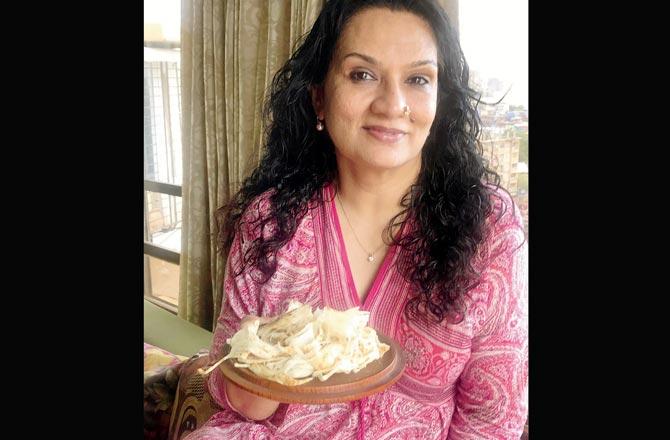As the Malayali household favourite creates a stir on social media, thanks to GST norms, a Keralite chef tells us how to get the layers right

(From bottom left) Make balls out of the dough; roll it out, make slits and fold them in; twist the cylindrical roll into a spiral-shaped base; the parotta should be flaky
Who would’ve imagined that the unassuming, flaky flatbread that is every Mallu’s pride would end up turning the heat on Twitter? Last week, the Karnataka bench of Authority of Advance Ruling held that since ready-to-eat Malabar parottas need to be heated or processed further for consumption, unlike a roti or chapati, they attract 18 per cent GST. While HandsOffParotta trends online, Sara Jacob Nair, co-founder and chef of the Bandra-based catering and delivery service NairOnFire, shares that the flatbread has always been a household favourite. She adds, however, that it’s her “nemesis”. “We’d beg my mother to make it. She would, but with a lot of grumbling, as it’s so much work!” she says.
The trick is in the kneading. “The more you knead, the flakier it is,” she explains, adding there are different methods. What is it best paired with? “While most love it with Kerala chilli chicken, I have it with chai, too.” she admits.

Sara Jacob Nair
Malabar parotta
Preparation time: 40 minutes
Cooking time: 15 minutes
Yield: 5 to 6 parottas
Ingredients
Flour - 3 cups
Suji/rawa - 1/4 cup
Sugar - 4 tbsp
Salt as required
Lukewarm water - as required
Butter - 50 gms
Ghee - 2 tbsp
Method
In a bowl, mix the dry ingredients. Little by little, add warm water while kneading, till the dough is made. The dough needs to be kneaded well till it is neither loose, nor very tight. It should be soft and pliable. Cover it to prove for 15 minutes. Mix the butter and ghee, and keep it aside. After 15 minutes, divide this dough into balls of equal portions. For this, take the entire dough in your ghee-brushed hand and push the quantity needed for each ball between your thumb
and forefinger. Roll out each ball of dough as thin as possible. Make thin slits vertically that are close to each other across the breadth of the rolled-out dough. Then, carefully fold each of the slits on to the next one and pile it all on top of each other to make a cylindrical roll. Next, twist the cylindrical roll into a spiral-shaped base. Now, using the base of your hand, start flattening the spiral-shaped base into a parotta. Cook the parottas one by one on a medium flame till they are golden brown and slightly crisp. Once cooked, take the parotta and stack it up. Beat the sides to release the steam and bring out the layers.
North verus South
. Nair says the typical North Indian paratha is made of whole wheat flour while the parotta uses maida or refined flour.
. There’s a difference in layering. Most North Indian parathas are rolled out, then folded to get the layers, while for the parotta, one needs to make a ball, turn it into a rope and then into a spiral-shaped base. The parotta is similar to lachha paratha, she adds, in terms of the physical texture.
Catch up on all the latest Mumbai news, crime news, current affairs, and a complete guide from food to things to do and events across Mumbai. Also download the new mid-day Android and iOS apps to get latest updates.
Mid-Day is now on Telegram. Click here to join our channel @middayinfomedialtd and stay updated with the latest news
 Subscribe today by clicking the link and stay updated with the latest news!" Click here!
Subscribe today by clicking the link and stay updated with the latest news!" Click here!









